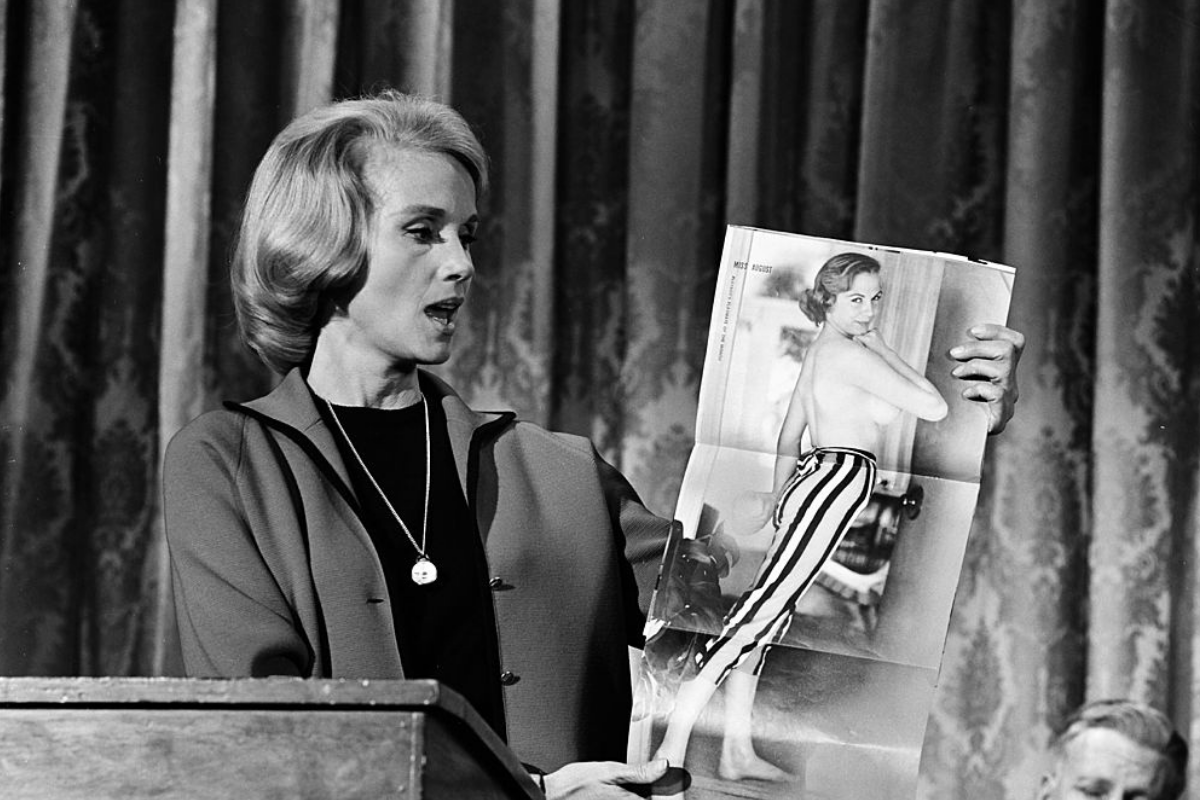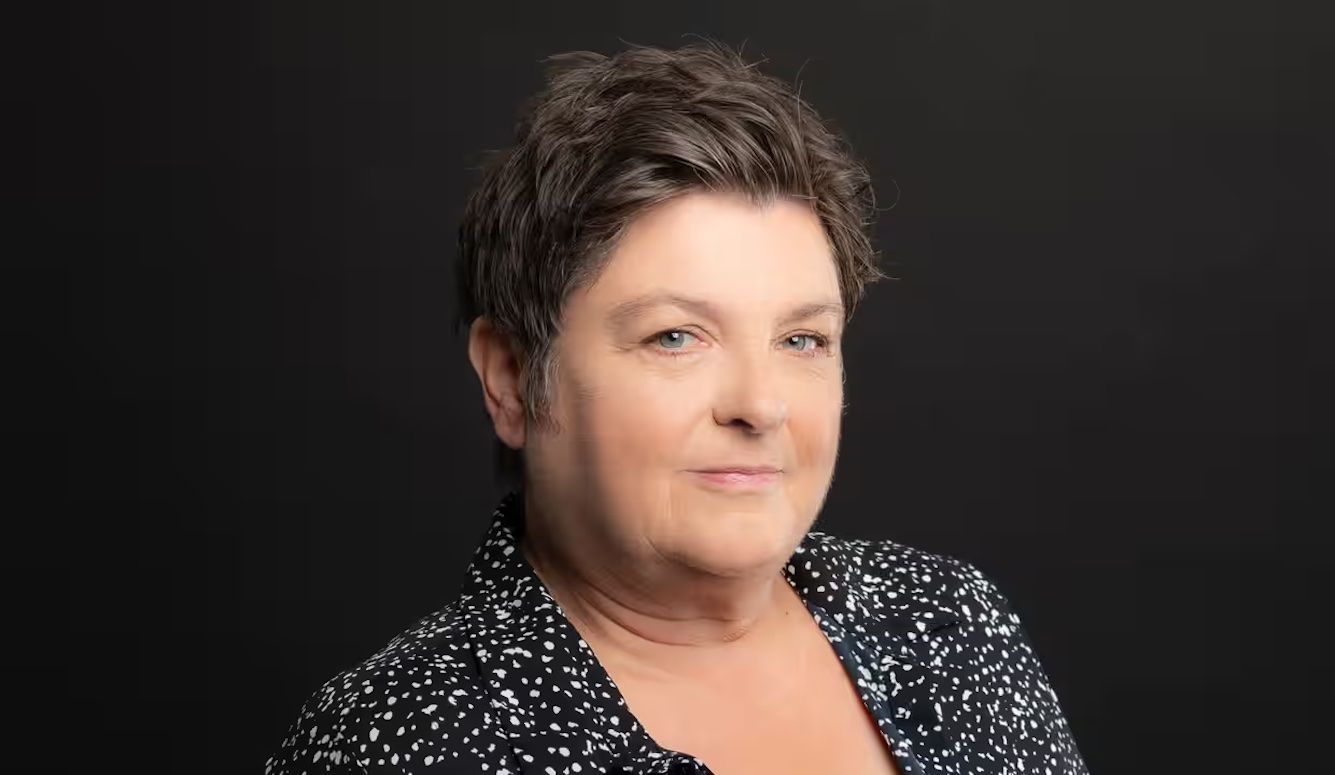Activism
The Moral Panic over 'Sexualisation'
I regularly found myself on national TV and radio, opposing the idea that the state should act to stop teenagers accessing sexual material.

When I was running a streaming adult movie site in 2007, two business threats appeared almost simultaneously—one from the market and the other from the state. The first was the arrival on the scene of YouPorn and a plethora of similar “tube” sites, which provided free streaming content. Within a couple of years, the tubes had ravaged the global pornography industry and put most players out of business. With their retail base annihilated, many of the big production studios were snapped up by Manwin (which later became Mindgeek), the owner of the biggest tube sites, and it gained a near-monopoly over what remained of the industry. My business limped on for a few more years, but from the autumn of 2007 onward, we saw a consistent month-on-month decline in sales.
The second threat came from what are euphemistically called British media regulators. Ofcom—a huge state-funded body with a wide range of responsibilities—maintained a tight grip on TV and radio, and the British Board of Film Classification or BBFC (a private business) enjoyed a government monopoly on censoring cinema and DVD releases. Video-on-demand broke a system of British state censorship that had been carefully constructed over decades. Using an obscure EU directive—the Audiovisual Media Services Directive or AVMS—as an excuse, regulatory bodies began trying to justify Internet censorship (note that AVMS was not designed to censor the Internet, and was implemented in most EU countries without any attempt to censor online content). The mechanism they seized upon was to mandate age verification of all visitors to all porn sites, arguing that whilst adults should have the right to watch smut, children should not. This was clever positioning and quite different from the earlier position of the British state that pornography posed a threat to anyone who watched it. To oppose this draconian new mechanism would involve defending the idea that teenagers might watch adult material.
I began to lead a lobbying campaign against the new regulations, based on my own business interest, and my deeper fear that a Chinese-style “great firewall” was being built in the name of child protection. However, while I received strong support from many quarters, the adult industry itself often supported the move towards regulation. There was a general feeling that just-the-right-amount of censorship might hold the tube sites at bay, and allow a return to the golden days when people actually paid for content. There was also a reluctance to oppose the regulations, on the grounds that it would look bad for the adult industry to be opposing what had been (falsely) portrayed as a child-protection mechanism. After I closed my business, I launched a campaign to defend free expression and sexual freedom against moralistic censorship campaigns.
And so I regularly found myself on national TV and radio, opposing the idea that the state should act to stop teenagers accessing sexual material. There were some easy points to make—that the mechanism simply would not work, and that it would be subject to mission-creep—but still, I often found myself defending a position many find indefensible. I did not—and still do not—believe that teenagers should be prevented from accessing explicit sexual material (even if it were possible to do such a thing), and I believe (based on the evidence I’ve seen) that trying to censor the Internet in this way would cause far more harm than good.

The idea that young people might have sexual feelings, desires, and even experiences, before reaching the state-mandated age of consent has triggered countless moral panics in recent years. I have closely followed and documented some of these panics, and encountered their proponents in TV studios, parliamentary inquiries, and university debating chambers. The instigators of sexualisation panics always claim to have evidence of harm, but they are never able to produce it. Beyond the obvious fact that non-consensual sex is certainly harmful, moral entrepreneurs tend to be driven either by deep moral (sometimes religious) outrage, or vested self-interest. When they talk about the sexualisation of children, they are almost always referring to teenagers who have passed puberty but are below the age of consent. And when pressed, they almost always mean girls. The word “sexualisation” is itself slippery and hard to define, and was in fact deliberately popularised by morality campaigners to paper over their lack of strong arguments for censorship.
* * *
The recent outcry over the Netflix film Cuties offers a case in point. The story of a young female Senegalese immigrant coming of age in France, Cuties has received some strong reviews. But (as might be expected) many of its critics did not have to see it in order to hate it. Stills and clips of the young actresses (who were aged between 12 and 14) dancing sexually went viral. The ensuing panic was amplified by Netflix’s own decision to use a provocative cover image to promote the film. Although many of the noisiest critics were from predictably religious and conservative quarters, some popular “anti-woke” figures, generally known for mocking the easily offended, also surrendered to righteous indignation. Previously staunch opponents of cancel culture began demanding that all right-thinking people cancel their Netflix subscriptions and it was quite a sight to behold. James Lindsay angrily contacted Netflix to ask “do you support pedophilia?” Lalo Dagach suggested that Netflix was distributing child porn, and Konstantin Kisin (who runs a podcast called “Triggernometry”) was so triggered that he referred to the platform as “Paedoflix.” Triggernometry also ran a (since deleted) live YouTube stream titled “Nonceflix and chill.”
The Cuties row offered a reminder that not everyone who loudly defends free expression is a principled opponent of censorship. Some free speech advocates simply oppose censorship when it is politically expedient to do so. Because much of the progressive Left has abandoned the free speech cause, some on the Right and the anti-anti-Right have opportunistically identified as free speech advocates since it provides them with a useful political cudgel. People like these, usually found berating the progressive Left for its intolerance of free expression, were suddenly behaving like the delicate activists they usually deride, marshalling arguments straight from the radical feminist playbook. Moral indignation soon gave way to personal attacks as opponents of Cuties began to accuse anyone who disagreed with them, or who suggested that Netflix had the right to screen its film, of being some kind of apologist for child abuse or even a threat to children. This kind of invective is simply the right-wing equivalent of progressive accusations of rape apologism, racism, or misogyny—emotive slurs designed to stigmatise a commentator as morally corrupt and beneath engagement. But amid all the effrontery, no one provided any evidence that Cuties had caused any harm to either the actresses involved or to anyone else in the wider world. Instead critics falsely denounced it as child pornography and/or leant on nebulous words like “sexualisation.”
Anti-sex moral panics are rarely, if ever, based on any evidence of harm. Allegations of harm tend to start with the performers themselves, who are said to be exploited, abused, trafficked, or prostituted (women and girls never have any control or agency in these stories—sexuality is always being done to them). The drawback with these arguments is that there are few victims to be found, and plenty of performers who are happy to talk about their work and their choices. But anti-pornography campaigners invariably claim to have met nameless women who have been horrifically abused within the sex entertainment industry. The British feminist group Object, the Australian group Collective Shout, and individual activists such as the journalist Julie Bindel and the academic Gail Dines, share their shock-stories with one another, so campaigners for free speech and sexual liberty tend to encounter the same anecdotes over and over again. Tiring of this, I once wrote to Object and suggested that, using their database of victims and my contacts in the adult industry, we should jointly approach the Metropolitan Police and bring the abusers to justice. They did not reply.

Having failed to find much evidence that performers themselves are being harmed, moralists turned to claiming that third parties are being damaged by the very existence of the offending content. In the 1980s, the pioneers of anti-porn feminism, Catharine MacKinnon and Andrea Dworkin, created the blueprint for this argument. Among their creations was the term “sexual objectification”—the idea that sexual imagery causes the male brain to believe that all women are mere objects that exist for their own sexual gratification. Although this is a powerful idea, it is hard to find evidence that this form of objectification exists. Pornography consumption has been rising sharply for at least half a century. This rise has been regularly accelerated by new technologies, from 8mm film to VHS, DVD to Blu Ray and broadband Internet. A steep rise in sexual objectification (if it’s not imaginary) must surely correlate with social trends. Rape trends (being, after all, the main obsession of the anti-sex feminists) will surely change with the availability of pornography.
There is indeed a strong correlation between the availability of pornography and the prevalence of rape. The good news (for everyone except anti-porn campaigners) is that the known correlations are negative—access to pornography is concurrent with marked declines in rape and child abuse. In the United States, rates of serious sexual violence fell by 85 percent between 1980 and 2005 when VHS, DVD, and home Internet access became commonplace. Further studies have examined the trend state by state, and found that, in the early days of the consumer Internet, the rate of sexual violence fell fastest in states with the greatest increase in Internet connections. Crimes other than rape did not fall significantly in the same period, and the fall in the tendency to commit rape was most significant among young men in the 15–19 age group. Which is to say that preventing teenage boys from accessing pornography might have unpleasant and unintended consequences.
The failure to link sexual expression to social harm has not, of course, deterred a new generation of pro-censorship campaigners. Following the lead of Mackinnon and Dworkin, they have ignored the lack of supporting evidence, and instead invented or popularised new words designed to create the impression that society is becoming increasingly corrupted by permissive sexual attitudes. The best-established of these is “sexualisation,” although others—such as “pornification,” coined by Gail Dines—pop up from time to time. Other panic keywords are used to create the impression that a more sexualised society is increasing harm to women and children and even men. Ideas including “sex addiction,” “porn addiction,” and “rape culture” are widely accepted as genuine social trends but none is clearly defined or supported by evidence.
Accusations of sexualisation were rife during the row over Cuties. The word is highly flexible, and consequently applied in a variety of different ways. Sometimes the performers were said to be sexualised by their clothing or behaviour. At other times, the movie itself was sexualised, and it also sexualised people who watched it, who in turn, went on to sexualise society. We may not know exactly what sexualisation is, but it does appear to spread virally—it is the idea of sex as an airborne pathogen. So well is this phenomenon now established in the popular mind that most people will not realise how recently the term entered common usage, or how poorly defined the idea is.
* * *
The notion of “sexualisation” was popularised by a 2011 report commissioned by the UK government and entitled “Letting Children Be Children.” The report, also known as The Bailey Review after its author Reg Bailey, produced a broad range of recommendations regarding the regulation of media from magazines to music videos and the Internet. However, Bailey was the chief executive of a Christian campaigning organisation called Mothers’ Union, so he was hardly an impartial voice and his findings were slated by experts who reviewed them. His report contained no original research, and produced no evidence in support of its recommendations. It provided no definition of “sexualisation,” and its conclusions were largely derived from opinion polls of parents rather than academic research.
Nevertheless, Bailey’s study not only set in motion various state-endorsed projects to censor sexual expression in the UK, it also helped to establish the idea that a new threat known as sexualisation was stalking Our Children. The Bailey Review was a useful propaganda tool for morality campaigners who (until then) could produce no report to back their claims. Now, armed with the s-word, activists wasted no time in using it. The Guardian ran a crowdsourcing campaign to gather photographs and stories that would prove the British high street was being sexualised (it wasn’t, although the paper did its best to convince its readers otherwise). The Guardian also ran a highly moralistic campaign to censor sexualised music videos (one of the focuses of the Bailey Review), which ended with the government appointing the BBFC as the official censor of music videos.
As with claims about the deleterious effects of objectification, we might expect to find social trends supporting the idea that society is being sexualised. But, again, we are to be disappointed. The moral entrepreneurs are, as ever, reluctant to provide evidence, and by almost any metric they do cite, sexualisation does not appear to be producing negative outcomes. Given that the Bailey Review itself had provided no evidence to support sexualisation, in 2013 a wide group of academics set out to examine the topic, and delivered “The Sexualisation Report.” This looked at a wide range of topics related to sexuality, and pointed out that the current concerns about sexualisation were hardly new:
Whilst sexualization is presented as a force “unlike anything faced by children in the past,” most public discussions about childhood sexuality since the late eighteenth century have taken this concerned form, stressing the corruption of childhood innocence and the need to protect young people by regulating their access to sex and to media.
The report also suggested that, despite rising public concern over child abuse, the actual trends appeared to be downward:
Rates of child sexual abuse appear to be either remaining constant or declining. UK research has suggested a decline in serious forms of contact sexual abuse.
The problem for believers in sexualisation is the fact that, notwithstanding the growing prevalence and availability of sexually explicit material, sex appears to be going out of fashion. In an unprecedented cultural shift, young people are giving up sex in record numbers. This is hardly the outcome anyone would expect if they believed that insidious sexualising, pornifying influences are bombarding our youth.
The Cuties row offers a reminder that the sexuality of girls remains a powerful taboo, even in the emancipated West. We begrudgingly accept that boys hit puberty, get horny, and need to masturbate a lot thereafter. But girls tend to be portrayed as asexual until reaching the age of consent. Insofar as the sexuality of girls is acknowledged, it is something prematurely violated by boys and men. This picture is simply inaccurate. Girls are plunged into a dizzying world of sexuality around the same time as boys (in fact girls reach puberty slightly earlier). Young women might experience this in different ways to young men, but it is no less intense, exhilarating, or confusing an experience.
Cuties did what its director Maïmouna Doucouré intended. It illuminated an issue with which liberal society still struggles to engage honestly: that girls become sexualised. And not by music videos, online pornography, or pressure from boys, but by puberty and the experiences that come with it. This remains a fiercely guarded taboo, and one with which society is perhaps now ready to start coming to terms. We can be justly proud of the legal protections that have been established to prevent the sexual abuse of children. But we should be less proud of our tendency to panic and suppress discussion of this issue, which may be counterproductive. As the clinical psychologist David Ley recently wrote in Psychology Today:
… outcry against child sexual abuse shouldn’t be merely another way to morally grandstand, or to signal virtue and purity… If we want to protect children… we must deal with facts, not panic.






